Bosch RA1141 User Manual
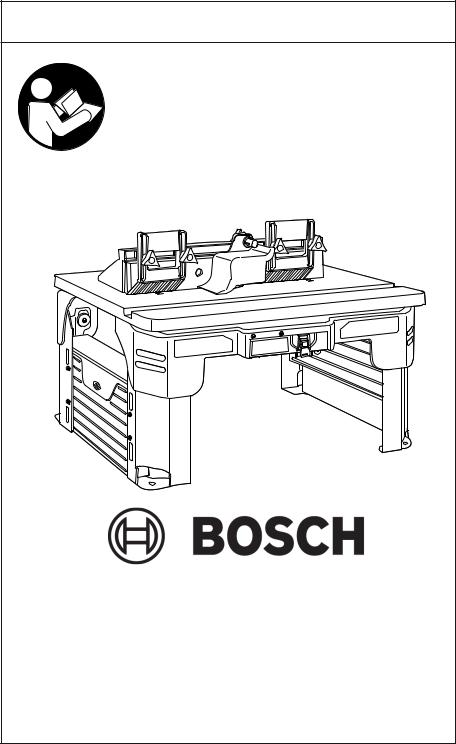
IMPORTANT: |
IMPORTANT : |
IMPORTANTE: |
Read Before Using |
Lire avant usage |
Leer antes de usar |
Operating/Safety Instructions
Consignes de fonctionnement/ sécurité
Instrucciones de funcionamiento y seguridad
RA1141
Consumer Information
Renseignement des consommateurs
Información para el consumidor
Toll-Free Number: |
Appel gratuit : |
Número de teléfono gratuito: |
|
1-877-BOSCH99 (1-877-267-2499) http://www.boschtools.com |
|||
|
|
|
|
For English |
Parlez-vous français? |
¿Habla español? |
|
See page 2 |
Voir page 34 |
|
Ver página 67 |

Table of Contents
IMPORTANT SAFETY |
2–6 |
Router Table Setup |
11–19 |
INFORMATION . . . . . . . . . . . . . . . . . . . . |
|||
Parts List . . . . . . . . . . . . . . . . . . . . . . . . |
7–10 |
Router Table Operation . . . . . . . . . . . |
20–33 |
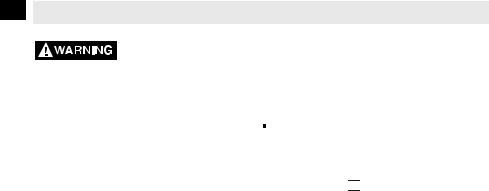
Power Tool Safety Rules
Read and understand the tool manual and these instructions for the use of this table with your router. Failure to follow all instructions listed
below may result in serious personal injury.
SAVE THESE INSTRUCTIONS
Work Area
Keep your work area clean and well lit. Cluttered benches and dark areas invite accidents.
Do not operate power tools in explosive atmospheres, such as in the presence of flammable liquids, gases, or dust. Power tools create sparks which may ignite the dust or fumes.
Keep bystanders, children, and visitors away while operating a power tool. Distractions can cause you to lose control.
Electrical Safety
Grounded tools must be plugged into an outlet properly installed and grounded in accordance with all codes and ordinances. Never remove the grounding prong or modify the plug in any way. Do not use any adaptor plugs. Check with a qualified electrician if you are in doubt as to whether the outlet is properly grounded. If the tools should electrically malfunction or break down, grounding provides a low resistance path to carry electricity away from the user. Improper grounding can shock, burn, or electrocute. Grounded tools are equipped with three-conductor cord and three- prong-type plugs. Before plugging in the tool, be certain the outlet voltage supplied is within the voltage marked on the nameplate. Do not use
“AC only” rated tools with a DC power supply.
Double-insulated tools are equipped with a polarized plug (one blade is wider than the other). This plug will fit in a polarized outlet only one way. If the plug does not fit fully in the outlet, reverse the plug. If it still does not fit, contact a qualified electrician to install a polarized outlet. Do not change the plug in any way.
Double Insulation 


 eliminates the need for the three-wire grounded power cord and grounded power supply system. Before plugging in the tool, be certain the outlet voltage supplied is within the voltage marked on the nameplate. Do not use “AC
eliminates the need for the three-wire grounded power cord and grounded power supply system. Before plugging in the tool, be certain the outlet voltage supplied is within the voltage marked on the nameplate. Do not use “AC
only” rated tools with a DC power supply. Avoid body contact with grounded surfaces such as pipes, radiators, ranges, and refrigerators.
There is an increased risk of electric shock if your body is grounded. If operating the power tool in damp locations is unavoidable, a Ground Fault Circuit Interrupter must be used to supply the power to your tool. Electriciansʼ rubber gloves and footwear will further enhance your personal safety.
Donʼt expose power tools to rain or wet conditions. Water entering a power tool will increase the risk of electric shock.
Do not abuse the cord. Never use the cord to carry the tools or pull the plug from an outlet. Keep cord away from heat, oil, sharp edges, or moving parts. Replace damaged cords immediately. Damaged cords increase the risk of electric shock.
When operating a power tool outside, use an outdoor extension cord marked “W-A” or “W.”
These cords are rated for outdoor use and reduce the risk of electric shock. Refer to “Important Information About Extension Cords” in your router table manual.
2

Personal Safety
Stay alert, watch what you are doing, and use common sense when operating a power tool. Do not use tool while tired or under the influence of drugs, alcohol, or medication.
A moment of inattention while operating power tools may result in serious personal injury.
Avoid accidental starting. Be sure switch is “OFF” before plugging in. Carrying tools with your finger on the switch or plugging in tools that have the switch “ON” invites accidents.
Remove adjusting keys or wrenches before turning the tool “ON.” A wrench or a key that is left attached to a rotating part of the tool may result in personal injury.
Do not overreach. Keep proper footing and balance at all times. Proper footing and balance enable better control of the tool in unexpected situations.
Use safety goggles (head protection). Wear safety goggles (must comply with ANSI Standard Z87.1) at all times. Wear nonslip footwear and a hard hat, if appropriate. Also, use face or dust mask if cutting operation is dusty and ear protectors (plugs or muffs) during extended periods of operation.
Tool Use and Care
Use clamps or other practical way to secure and support the workpiece to a stable platform. Holding the work by hand or against your body is unstable and may lead to loss of control.
Do not force tool. Use the correct tool for your application. The correct tool will do the job better and safer at the rate for which it is designed.
Do not use tool if switch does not turn it “ON” or “OFF.” Any tool that cannot be controlled with the switch is dangerous and must be repaired.
Disconnect the plug from the power source before making any adjustments, changing accessories, or storing the tool. Such
preventive safety measures reduce the risk of starting the tool accidentally.
Keep guards in place. Maintain the guards in working order and in proper adjustment and alignment.
Store idle tools out of reach of children and other untrained persons. Tools are dangerous in the hands of untrained users.
Never leave tools running unattended.
Turn the power “OFF.” DO NOT leave tool until it comes to a complete stop.
Maintain tools with care. Keep cutting tools sharp and clean. Properly maintained tools, with sharp cutting edges, are less likely to bind and are easier to control. Any alteration or modification is a misuse and may result in a dangerous condition.
Check for damaged guards or parts, misalignment or binding of moving parts, breakage of parts, and any other condition that may affect the toolʼs operation. If damaged, have the tool properly repaired or replaced before using. Many accidents are caused by poorly maintained tools. Develop a periodic maintenance schedule for your tool.
Use only accessories that are recommended by the manufacturer for your model. Accessories that may be suitable for one tool may become hazardous when used on another tool.
Service
Tool service must be performed only by qualified repair personnel. Service or maintenance performed by unqualified
personnel could result in a risk of injury. For example, internal wires may be misplaced or pinched, or safety guard return springs may be improperly mounted.
When servicing a tool, use only identical replacement parts. Use of unauthorized parts or failure to follow maintenance instructions may create a risk of electric shock or injury. Certain cleaning agents such as gasoline, carbon tetrachloride, and ammonia may damage plastic parts.
Additional Safety Warnings for Router Tables
Lift router table only by the table edges.
Lifting table by any other surface could cause personal injury.
Always rotate leg assembly from end of leg and keep fingers clear of joint. This avoids a pinch point.
Never rotate leg assemblies until they are in the unlocked position. This will prevent possible damage to the legs or table housings. Broken legs or table housings may allow the table to collapse.
Do not use the router table until all assembly and installation steps have been completed. Prior to each use, verify that fasteners and the router clamps are tight. A loose table or router is unstable and may shift in use, resulting in property damage or serious personal injury.
Before operating the router in the router table, ensure that the table legs are fully extended, in the locked position, and the entire unit (router table with router) is placed on and secured to a solid, flat, level surface that will not tip. Such precautionary safety measures reduce the risk of the table
3

Additional Safety Warnings for Router Tables
shifting unexpectedly while in use, resulting in property damage or serious personal injury.
Disconnect the router from the power supply before installing router into the table, making adjustments, changing accessories, removing the router from the table, performing maintenance, or storing the tool. Such precautionary safety measures reduce the risk of unintentional tool operation.
Do not plug router motor power cord into standard wall outlet. Always plug router cord into the router table switch box. Power tool switches and controls need to be within your reach in emergency situations.
Do not permit fingers to touch terminals on the plug when inserting or removing plug from the outlet.
Before connecting router or vacuum to router table switch box, ensure that the router or vacuum switch is off and that the router table switch box is unplugged. Such precautionary safety measures reduce the risk of unintentional tool operation.
Before using the router table, verify that the router is securely clamped in the router table base. While working, periodically check the router base fastener clamping tightness. Vibrations from cutting operations can cause router motor clamps to loosen and the router motor may fall from the table.
Before starting to work, ensure that the power cords from the router accessories, the switch box, and the extension cord do not and cannot come in contact with the router or any moving parts of the router.
Such precautionary safety measures reduce the risk of injury due to loss of control.
Do not use the router table without the overhead guard unless required by a particular cutting operation. Replace guard immediately after completion of cutting operation. Remove all dust, chips, and any other foreign particles that can affect its function. The guard will aid in keeping hands from unintended contact with the rotating bit.
Do not use bits that have a cutting diameter that exceeds the clearance hole in the tabletop insert plate or insert rings.
Bit could contact insert plate or insert ring, throwing fragments.
Never use dull or damaged bits. Damaged bits can snap during use. Dull bits require more force to push the workpiece, possibly causing the bit to break or the material to kick back.
Handle sharp bits with care. Such precautionary safety measures reduce risk of injury.
Do not alter insert ring or insert plate bit hole. Match the cutting diameter of the bit to the inner diameter of the insert ring or insert plate bit hole such that the difference is no less than 1/16" on a side.
Insert rings are meant to reduce the gap between the cutting diameter of the bit and the table so that workpieces maintain full support of the table while routing.
Install bit in accordance with instructions in the router manual. Securely clamp the router bit in the collet chuck before making any cuts. Securing the bit before cutting reduces the risk of the bit becoming loose during operation.
Never place your fingers near a spinning bit or under the guard when the router is plugged in. Such precautionary safety measures reduce the risk of injury.
Never hold the workpiece on the outfeed side of the bit. Pressing the workpiece against the outfeed side of the fence may cause material binding and possible kickback, pulling your hand into the bit.
Guide the workpiece with the fence to maintain control of the workpiece. Do not place the workpiece between router bit and fence while routing the edge. This placement will cause the material to become wedged, making kickback possible.
Only use routers for working with wood, woodlike products, plastic, or laminates. Do not use router and router table for cutting or shaping metals. Be sure workpiece does not contain nails or other hard objects. Cutting nails may cause loss of control of the tool or workpiece.
Never start the tool when the bit is engaged in the material. The bit-cutting edge may grab the material, causing loss of control of the workpiece.
Feed the workpiece only against the rotation of the bit. Do not “back feed” the workpiece into the bit. The bit rotates counterclockwise as viewed from the top of the table. “Back feeding” will cause the workpiece to “climb” up on the bit, pulling the workpiece and possibly your hands into the rotating bit.
Do not feed the workpiece into the bit where the majority of the workpiece is between the fence and the bit. This creates a “fence trap” which is a hazardous situation due to the bit being exposed. This will cause the work to “climb-cut” away from the tabletop and may lead to loss of control during operation.
Do not cut material that is warped, wobbly, or otherwise unstable. The router table is designed to cut flat, straight, and squared materials. If the material is slightly curved but otherwise stable, cut the material with the concave side against the table or fence.
Cutting the material with the concave side up or away from the table may cause the warped or wobbly material to roll and kick back, causing the user to lose control.
4

Additional Safety Warnings for Router Tables
Use auxiliary infeed and outfeed supports for long or wide workpieces. Oversize workpieces without adequate support can flip off the table or cause the table to tip.
Use push stick, vertically and horizontally mounted featherboards (spring sticks), and other jigs to hold down the workpiece.
Push sticks, featherboards, and jigs eliminate the need to hold the workpiece near the spinning bit.
Never let go of the workpiece when routing until the cut has been completed and the workpiece is completely clear of the bit.
Such precautionary safety measures reduce the risk of injury and property damage. Featherboards aid in holding the workpiece in position when routing on a router table. They are not intended to hold the workpiece in place alone when the workpiece is in contact with the bit, or at any other time when the bit is turning.
Always hold the workpiece against the router table fence when routing. Such precautionary measures increase accuracy in routing and improve control of the workpiece, reducing the risk of injury.
Never leave the router unattended while it is running or before it comes to a complete stop. Such precautionary safety measures reduce the risk of injury and property damage.
Do not use the table as a workbench or work surface. Using it for purposes other than routing may cause damage and make it unsafe to use in routing.
Never stand on the table or use as a ladder or scaffolding. The table could tip or the cutting tool could be accidentally contacted.
When servicing the tool, use only recommended Bosch replacement parts. Follow instructions in the Maintenance section of this manual. Use of unauthorized parts or failure to follow maintenance instructions can result in personal injury.
Some dust created by power sanding, sawing, grinding, drilling, and other construction activities contains chemicals known to cause cancer, birth defects, or other reproductive harm. Some examples of these chemicals are:
•Lead from lead-based paints
•Crystalline silica from bricks, cement, and other masonry products
•Arsenic and chromium from chemically treated lumber
Your risk from these exposures varies, depending on how often you do this type of work. To reduce your exposure to these chemicals, work in a well-ventilated area, and work with approved safety equipment, such as those dust masks that are specially designed to filter out microscopic particles.
Improper Fence Location and Workpiece Feed
Do not feed the workpiece where the majority of the workpiece is
between the fence and the bit. This creates a “fence trap” which is dangerous for two reasons:
•The front of the bit is exposed during the cutting operation (Fig. A).
•The bit can “Climb-cut,” where the bit enters the workpiece in the same direction as the feed direction. This is likely to cause the workpiece to “climb” away from the tabletop and may lead to loss of control during operation (Fig. A).
Feed the workpiece only against the rotation of the bit. Do not
“back feed” the work into the bit. The bit rotates counterclockwise as viewed from the top of the table. “Back feeding” the work is dangerous for two reasons:
• It will cause climb-cutting where the workpiece can “climb” off the tabletop in the direction of the bit rotation, pulling the workpiece and possibly your hands into the rotating bit (Fig. B).
• It is difficult to keep the workpiece against the fence face as the bit rotation will push the workpiece away from the fence.
FIG. A
DIRECTION
OF FEED
WORKPIECE
EXPOSED BIT
FIG. B
CORRECT
DIRECTION
OF FEED
WORKPIECE
INCORRECT
DIRECTION
CLIMB-CUTTING
5

Important Information About Extension Cords
An extension cord with adequate size conductors
that is capable of carrying the current for your tool must be used. This will prevent excessive voltage drop, loss of power, or overheating. Grounded tools must use 3-wire extension cords that have 3-prong plugs and receptacles.
NOTE: The smaller the gauge number, the heavier the cord.
RECOMMENDED SIZES OF EXTENSION CORDS FOR 120-VOLT ALTERNATING CURRENT TOOLS
Tool’s |
Cord Size in A.W.G. |
Wire Sizes in mm2 |
|||||||
Ampere |
|
|
|
|
|
|
|
|
|
Cord Length in Feet |
Cord Length in Meters |
||||||||
Rating |
|||||||||
|
25 |
50 |
100 |
150 |
15 |
30 |
60 |
120 |
|
3-6 |
|
|
|
|
|
|
|
|
|
18 |
16 |
16 |
14 |
.75 |
.75 |
1.5 |
2.5 |
||
6-8 |
18 |
16 |
14 |
12 |
.75 |
1.0 |
2.5 |
4.0 |
|
8-10 |
18 |
16 |
14 |
12 |
.75 |
1.0 |
2.5 |
4.0 |
|
10-12 |
16 |
16 |
14 |
12 |
1.0 |
2.5 |
4.0 |
— |
|
12-16 |
14 |
12 |
— |
— |
— |
— |
— |
— |
|
|
|
|
|
|
|
|
|
|
|
Symbols
IMPORTANT: Some of the following symbols may be used on your tool. Please study them and learn their meaning. Proper interpretation of these symbols will allow you to operate the tool better and safer.
Symbol |
Name |
Designation/Explanation |
|||||||
V |
Volts |
Voltage (potential) |
|||||||
A |
Amperes |
Current |
|||||||
Hz |
Hertz |
Frequency (cycles per second) |
|||||||
W |
Watt |
Power |
|||||||
kg |
Kilograms |
Weight |
|||||||
min |
Minutes |
Time |
|||||||
s |
Seconds |
Time |
|||||||
Ø |
|
|
|
|
Diameter |
Size of drill bits, grinding wheels, etc. |
|||
n0 |
No load speed |
Rotational speed, at no load |
|||||||
.../min |
Revolutions or reciprocation |
Revolutions, strokes, surface speed, orbits, |
|||||||
|
|
|
|
|
|
|
|
per minute |
etc., per minute |
0 |
|
|
|
|
|
Off position |
Zero speed, zero torque... |
||
1, 2, 3, ... |
Selector settings |
Speed, torque, or position settings |
|||||||
I, II, III, |
|
Higher number means greater speed |
|||||||
0 |
|
|
|
|
|
Infinitely variable selector |
Speed is increasing from 0 setting |
||
|
|
|
|
|
|
|
|
with off |
|
|
|
|
|
|
|
|
|
Arrow |
Action in the direction of arrow |
|
|
|
|
|
|
|
|
||
|
|
|
|
|
|
|
|
Alternating current |
Type or a characteristic of current |
|
|
|
|
|
|
|
|
Direct current |
Type or a characteristic of current |
|
|
|
|
|
|
|
|
||
|
|
|
|
|
|
|
|
Alternating or direct current |
Type or a characteristic of current |
|
|
|
|
|
|
|
|
||
|
|
|
|
|
|
|
|
Class II construction |
Designates double-insulated construction tools |
|
|
|
|
|
|
|
|
||
|
|
|
|
|
|
|
|
|
|
|
|
|
|
|
|
|
|
Earthing terminal |
Grounding terminal |
|
|
|
|
|
|
|
|
||
|
|
|
|
|
|
|
|
Warning symbol |
Alerts user to warning messages |
|
|
|
|
|
|
|
|
||
|
|
|
|
|
|
|
|
||
|
|
|
|
|
|
|
|
Ni-Cad RBRC seal |
Designates Ni-Cad battery recycling program |
|
|
|
|
|
|
|
|
|
|
This symbol designates that components of this tool are recognized by Underwriters Laboratories and recognized to Canadian Standards by Underwriters Laboratories.
6

Parts List
Refer to Parts List below and on pages 8–10.
• |
|
|
|
|
If ANY of the parts are |
|
|
|
|
||
|
|
|
|
||
|
|
|
|
missing, DO NOT attempt |
|
|
|
to assemble, install, or use your router table |
|||
|
until the missing parts have been found or |
||||
|
replaced and your router table has been |
||||
|
properly and correctly assembled per this |
||||
• |
manual. |
||||
For missing parts or technical |
|||||
|
assistance, call 1-877-BOSCH99 |
||||
|
(877-267-2499). |
|
|||
•In order to simplify handling and to minimize any damage that may occur during shipping, your router table comes mostly assembled.
Repositioning of some parts will be required.
•Separate all parts from the packaging materials and check each part against the illustrations and the parts lists to make sure that all parts have been included. Do this before discarding any of the packaging material.
Key No. |
Description |
Quantity |
A |
ROUTER TABLE ASSEMBLY COMPONENTS |
|
|
(shipped preassembled) |
|
1 |
Router Tabletop, 1" |
1 |
2 |
Insert Plate |
1 |
3 |
Miter Channel (includes 3 #10-32 x 7/8" screws, item 41) |
1 |
4 |
Easy Click Router Mounting Plate |
1 |
5 |
Router Release Mechanism (not shown) |
1 |
6 |
Front Table Housing |
1 |
7 |
Rear Table Housing |
1 |
8 |
Left Folding Steel Legs |
2 |
9 |
Tool Box w/ Hinged Cover |
2 |
10 |
Right Folding Steel Legs |
2 |
11 |
Insert Ring Set (3 rings per set) |
1 |
11A |
Insert Ring w/ 1¼" dia. hole |
1 |
11B |
Insert Ring w/ 17⁄8" dia. hole |
1 |
11C |
Insert Ring w/ 21⁄8" dia. hole |
1 |
12 |
Fence Retaining Bracket (not shown) |
2 |
13 |
Small Star Clamping Knob (not shown) |
2 |
B |
SWITCH BOX ASSEMBLY COMPONENTS |
|
14 |
Switch Box Assembly (with lockout key) |
1 |
15 |
Lockout Key |
1 |
C |
FENCE ASSEMBLY COMPONENTS |
|
|
(shipped preassembled) |
|
16 |
Router Table Fence |
1 |
17 |
Featherboard Mounting Rail |
1 |
18 |
Overhead Guard Assembly (includes spacer) |
1 |
19 |
Faceplate |
2 |
20 |
Outfeed Shim Plate (may be attached to outfeed side of fence) |
2 |
21 |
Clamping Knob |
11 |
22 |
Featherboard |
2 |
– |
Spacer (see item 31) |
2 |
D |
MITER GAUGE ASSEMBLY COMPONENTS |
|
23 |
Miter Bar |
1 |
24 |
Protractor Head |
1 |
– |
Flat Washer (see item 33) |
1 |
25 |
Small Clamping Knob |
1 |
E |
STARTER PIN COMPONENTS |
|
26 |
Starter Pin |
1 |
27 |
Starter Pin Guard |
1 |
– |
Guard Screw (see item 38) |
1 |
F |
BIT HEIGHT GAUGE ASSEMBLY (shipped preassembled) |
|
28 |
Gauge Body |
1 |
29 |
Gauge Pointer |
1 |
7
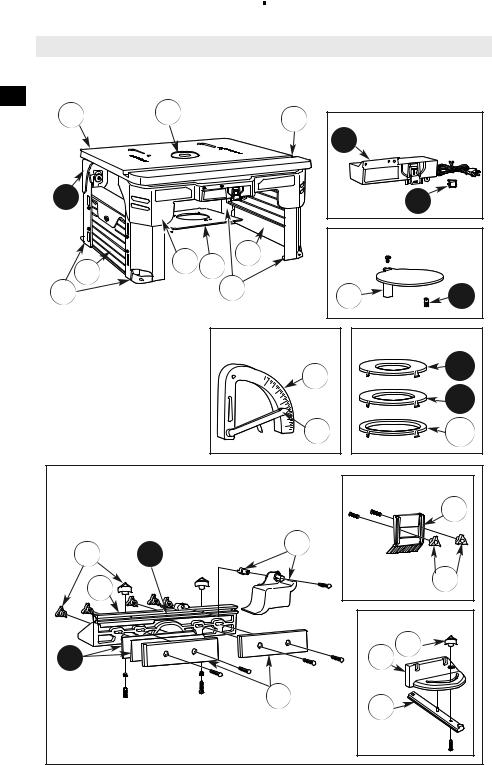
|
|
Parts List |
|
Table Assembly Components |
|
||
1 |
2 |
3 |
Switch Assembly |
|
|
|
|
|
|
|
|
14 |
|
7 |
|
|
|
|
15 |
|
|
|
|
|
|
|
|
|
9 |
Guide Pin Components |
|
|
|
6 |
|
|
|
9 |
|
4 |
|
|
|
|
|
|
|
||
|
|
10 |
|
|
|
8 |
|
|
27 |
26 |
|
|
|
|
Bit Height Gauge |
Tabletop Inserts |
|
|
|
|
28 |
|
11A |
|
|
|
|
|
|
|
|
|
|
|
11B |
|
|
|
29 |
|
11C |
Fence Components |
|
|
Featherboard |
||
|
|
|
|
||
|
|
|
|
|
22 |
21 |
17 |
|
18 |
|
|
|
|
|
|
||
16 |
|
|
|
|
21 |
|
|
|
|
|
|
|
|
|
|
Miter Gauge |
|
20 |
|
|
|
24 |
25 |
|
|
|
19 |
23 |
|
|
|
|
|
|
|
|
|
|
8 |
|
|

Parts List
Key No. |
Description |
Quantity |
|
ITEMS NOT ILLUSTRATED |
|
30 |
Operating/Safety Instructions |
1 |
|
MISCELLANEOUS FASTENERS |
|
|
(installed or bagged) |
|
31 |
Spacer |
2 |
32 |
#10-32 KEPS Nut |
15 |
33 |
#10-32 Flat Washer |
3 |
34 |
#8-32 x 1/2 Pan-Head Machine Screw (router mounting) |
3 |
35 |
#10-16 x 1/2" Pan-Head Screw |
4 |
36 |
#10-24 x 1/2" Pan-Head Machine Screw (router mounting) |
3 |
37 |
#10-24 x 1" Carriage Bolt |
1 |
38 |
#10-32 x 3/8" Truss-Head Screw |
1 |
39 |
#10-32 x 1/2" Pan-Head Machine Screw (router mounting) |
3 |
40 |
#10-32 x 5/8" Truss-Head Screw |
20 |
41 |
#10-32 x 7/8" Countersunk-Head Screw |
3 |
42 |
5/16-18 x 1/2" Pan-Head Machine Screw (router mounting) |
3 |
43 |
B3 x 5/8" Washer-Head Tapping Screw |
3 |
44 |
#10-32 x 2½" Truss-Head Screw |
2 |
45 |
1/4-20 x 1¼" Carriage Bolt |
4 |
46 |
1/4-20 x 1½" Carriage Bolt |
4 |
47 |
1/4-20 x 2¼" Square-Head Bolt |
2 |
48 |
1/4-20 x 2½" Carriage Bolt |
1 |
49 |
Upper Table Slide (used in miter channel) |
1 |
50 |
Lower Table Slide (used in miter channel) |
1 |
NOTE: The hardware bag contains fasteners for mounting several models of routers. Some fasteners may not be used in the setup of this model. Refer to the parts list above for the correct sizes and quantities used with this table.
Miscellaneous Fasteners
(31) Spacer |
(32) #10-32 KEPS Nut |
(33) #10-32 Flat Washer |
(for Square-Head Bolts) |
(for Switch Box) |
(for Miter Gauge) |
(34) #8-32 x 1/2″ |
(35) #10-16 x 1/2" |
Pan-Head Machine |
Pan-Head Tapping Screw |
Screw (for Router) |
(for Leg Caps) |
(36) #10-24 x 1/2″ |
(37) #10-24 x 1" |
Pan-Head Machine |
Carriage Bolt |
Screw (for Router) |
(for Miter Gauge) |
9

Parts List
Miscellaneous Fasteners (cont.)
(38) #10-32 x 3/8" Truss-Head Screw (for Guide Pin Guard)
(42) 5/16-18 x 1/2″ Pan-Head Machine Screw (for Router)
(39) #10-32 x 1/2″ Pan-Head Machine Screw (for Router)
(43) B3 x 5/8” Washer-Head Screw (for Insert Plate)
|
|
(41) #10-32 x 7/8" |
(40) #10-32 x 5/8" |
||
Truss-Head Screw |
Countersunk-Head Screw |
|
|
(for Switch Box) |
(for Miter Channel) |
(44) #10-32 x 2½" Truss-Head Screw (for Fence Retaining Brackets)
(45) 1/4-20 x 1¼" Carriage Bolt (for Faceplate)
(47) 1/4-20 x 2¼" Square-Head Bolt (for Fence Base)
(46)1/4-20 x 1½" Carriage Bolt (for Featherboards)
|
(49) Upper Slide Plate |
(48) 1/4-20 x 2½" Carriage Bolt |
(50) Lower Slide Plate |
(for Overhead Guard) |
|
|
(for Tabletop Featherboard Mounting) |
10

Router Table Setup
PREPARING THE ROUTER TABLE FOR USE
Lift router table only by the table edges. Lifting
table by any other surface could cause personal injury.
HELPFUL TOOLS TO HAVE ON HAND
•#1 and #2 Phillips screwdrivers (not included)
•3/8" wrench or nut driver (not included)
UNFOLDING AND LOCKING LEGS (Figs. 1 and 2)
1.Gently lift and place the router table assembly upside down on the tabletop (1).
2.Gently pull both leg assemblies (8 and 10) inward towards center of the table until the leg assemblies are in the unlocked position as shown in Fig. 1.
Always rotate leg assembly from end of leg
and keep fingers clear of joint. This avoids a pinch point.
Never rotate leg assemblies until the
locking tabs have been completely disengaged. This will prevent possible damage to the locking tabs or table housings.
3.After the leg assemblies (8 and 10) are unlocked, rotate both leg assemblies to the fully upright and extended position. (See Fig. 2.)
4.Gently press down on both leg assemblies (8 and 10) to secure and lock the left and right leg assemblies in the upright position as shown in Fig. 2.
FIG. 1
LOCKED |
UNLOCKED |
(LEGS SLID |
(LEGS SLID |
TOWARDS |
TOWARDS |
OUTSIDE) |
CENTER) |
10 |
8 |
|
|
1 |
FIG. 2 |
|
UNLOCKED |
LOCKED |
(LEGS SLID UP |
(LEGS SLID DOWN |
AWAY FROM TABLE) |
TOWARDS TABLE) |
10 |
8 |
11
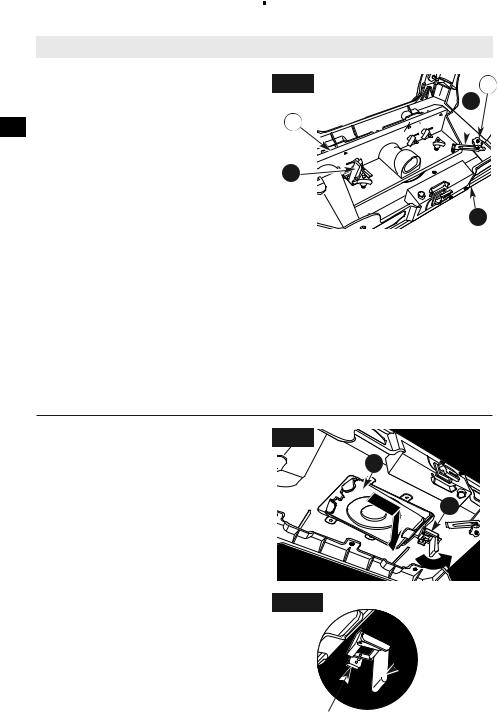
Router Table Setup
REMOVING THE FENCE ASSEMBLY
(Fig. 3)
The fence for your router table comes fully assembled with the adjustable jointing fence and overhead guard already in place. The fence assembly is secured to the bottom of the table for shipment and storage. The handle for the router
release mechanism passes through a square hole in the base of the fence assembly when it is in its stored position.
1.Loosen two small star clamping knobs (13) and fence retaining brackets (12) securing fence assembly (C) to bottom of router table
(1). Remove fence assembly (C) from the storage position under the router table (1) and set it to one side. (See Fig. 3.)
2.Tighten the small star clamping knobs (13) and fence retaining brackets (12) to secure the brackets to the bottom of the table (1).
To reinstall the fence assembly for storage:
1.Make sure the two faceplates are positioned so they are completely together.
FIG. 3 |
13 |

 12 C
12 C 




5 |
1
2.Position the fence assembly (C) so the square hole is on the same side as the router release mechanism (5). Slide the fence under the tool box so that the square hole fits over the handle of the router release mechanism and position the fence assembly flat on the underside of the table (1).
3.Position the two fence retaining brackets (12) over the corners of the fence assembly and tighten the small star clamping knobs (13) to secure.
NOTE: Shim plates can be stored on outfeed side of the fence assembly.
REMOVING THE EASY CLICK ROUTER MOUNTING PLATE FROM THE BASE PLATE (Fig. 4 and Detail 4)
This router table is provided with a Easy Click router mounting system. The utilization of this system requires the installation of a router
mounting plate to the router base. The mounting plate has predrilled holes in it that will match up with the mounting holes in most standard routers.
1.Push latch spring away from clamp handle to release the handle. (See Detail 4.)
2.Push clamp handle away from Easy Click Base to open the router release mechanism (5).
3.Pull the tab on the router mounting plate (4), closest to the clamp handle, towards the handle and down to remove the mounting plate from the base plate. (See Fig. 4.)
FIG. 4
4
5
DETAIL 4
CLAMP



 HANDLE
HANDLE
LATCH 
SPRING
12

Router Table Setup
ATTACHING THE EASY CLICK ROUTER MOUNTING PLATE TO THE ROUTER (Figs. 5–7)
The router mounting plate included with this router table is designed to fit the routers in Chart 1 on page 14. The router mounting plate also features access holes to allow use of the over-table height adjustment (OTA) feature on certain router models. See Fig. 7 for OTA access hole. Refer to your router manual for additional information on using this feature.
Disconnect the router from the power supply
before installing router into the table, making adjustments, changing accessories, removing the router from the table, performing maintenance, or storing the tool. Such precautionary safety measures reduce the risk of unintentional tool operation.
1.Remove the plastic subbase from your router. (See Fig. 5.)
•If you wish to mount the router with the subbase, you may need to purchase longer fasteners. Using the subbase reduces the range of the cutting depth.
2.If your router has its own dust extraction hood that mounts to the top of the router base and you want to use it under the router table, this is a convenient time to install it.
3.Using Chart 1 on page 14, determine the hardware and hole pattern type for your router.
•The screws are driven into threaded holes in the routerʼs base.
•Other manufacturersʼ routers are outside of Bosch's control. Changes made to these routers may affect the compatibility to the fasteners specified and/or supplied with this table.
•Always make sure the screw is fully seated on the mounting plate and that the router base is firmly against the mounting plate to ensure secure mounting. If the router, plate, and fasteners do not seat together properly, you may need to purchase new fasteners of a different length or size.
FIG. 5
REMOVE 
 SUBBASE
SUBBASE 

FIG. 6
4
Before using the router table, verify that the router
is securely clamped in the router table base. While working, periodically check the router base fasteners clamping tightness.
Router motor vibration can loosen fasteners during use, causing the router to fall from the table.
4.Refer to the mounting plate guide (Fig. 7) on page 14 and align the appropriate mounting plate holes for your router to the router base holes. Before you mount the router, be sure that the router position does not interfere with the table switch and Easy Click router mounting system.
When mounting your router to the mounting plate, there may be numerous possible ways to orient the router to the plate. Please consider all orientations to see which one will work best when the plate is mounted to the table.
5.Securely mount the Easy Click mounting plate (4) to your router. (See Fig. 6.)
NOTE: Mounting plate must be mounted with the bent tabs towards the router. Plate must also be mounted so no router parts interfere with the table or the router mounting mechanism.
13
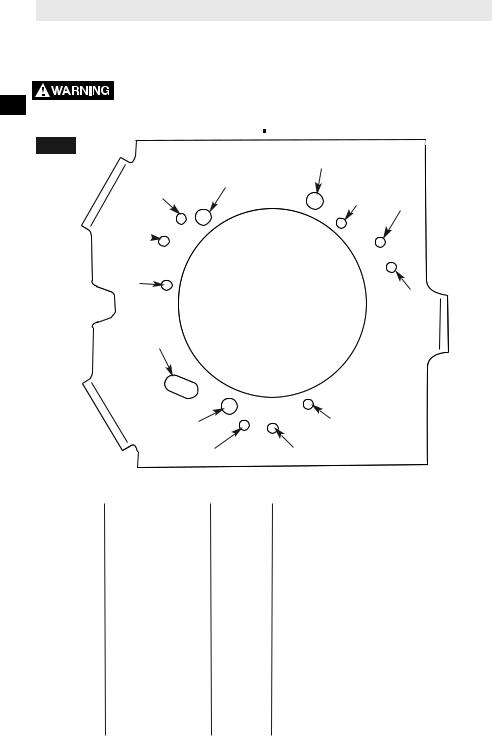
Router Table Setup
ATTACHING THE EASY CLICK ROUTER MOUNTING PLATE TO THE ROUTER (Figs. 5–7) (cont.)
Before using the router table, verify that the router is securely clamped in the router table base. While working, periodically check the router base
fasteners clamping tightness. Router motor vibration can loosen fasteners during use, causing the router to fall from the table.
FIG. 7 |
TOP FRONT OF PLATE |
|
|
|
D |
|
|
|
|
|
|
|
D |
|
|
|
C |
B |
A |
|
|
||
|
|
|
A 
B
C
OTA1
|
|
D |
|
B |
|
|
C |
|
A |
|
|
|
|
OTA1 = Over-table height adjustment 1 |
CHART 1 |
|
|
|
|
|
|
|
|
|
Router |
Router |
Hole |
Fasteners |
|
Brand |
Model |
Pattern |
Required |
|
Bosch |
1617 series (fixed |
B |
#10-24 x 1/2" Pan-head Phillips machine screws (36) |
|
|
|
base models only) |
|
|
Craftsman |
17508, 17542, 26620, |
A |
#10-32 x 1/2" Pan-head Phillips machine screws (39) |
|
|
|
17533, 17528, 17511, |
|
|
|
|
26834, 28190, 73277 |
|
|
Craftsman |
17541 |
C |
#10-32 x 1/2" Pan-head Phillips machine screws (39) |
|
DeWalt |
DW616, DW618 |
B |
#8-32 x 1/2" Pan-head Phillips machine screws (34) |
|
|
|
(fixed base only) |
|
|
Hitachi |
M12VC |
B |
#10-32 x 1/2" Pan-head Phillips machine screws (39) |
|
Makita |
RF1100, RF1101 |
B |
#10-24 x 1/2" Pan-head Phillips machine screws (36) |
|
Milwaukee |
5615, 5616 |
B |
#10-24 x 1/2" Pan-head Phillips machine screws (36) |
|
Porter Cable |
690 series, |
B |
#10-24 x 1/2" Pan-head Phillips machine screws (36) |
|
|
|
7529 plunge router, |
|
|
|
|
and 892–895 series |
|
|
|
|
(fixed base only) |
|
|
Ryobi |
163K |
D |
5/16-18 x 1/2" Pan-head Phillips machine screws (42) |
|
Skil |
1810, 1815, 1820, 1825 |
A |
#10-32 x 1/2" Pan-head Phillips machine screws (39) |
|
14
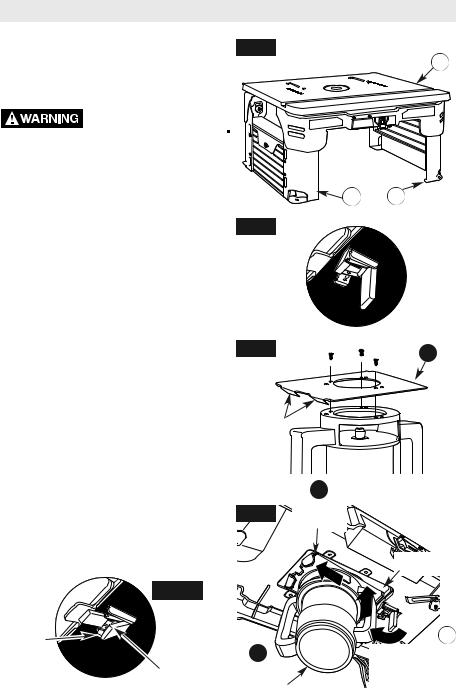
Router Table Setup
INSTALLING THE EASY CLICK
MOUNTING PLATE AND ROUTER TO
THE ROUTER TABLE (Figs. 8–11 and
Detail 11)
Before using the router table, verify that the
router is securely clamped in the router table base. While working, periodically check the router base fasteners clamping tightness. Router motor vibration can loosen fasteners during use, causing the router to fall from the table.
1.Make sure the table (A) is upright and on its legs (8 and 10). (See Fig. 8.)
2.Check the clamp handle to make sure it is open and released. (See Fig. 9.)
3.Position the router mounting plate (4) on the router so the angled tabs on the mounting plate are facing down and towards the router. (See Fig. 10.)
4.While supporting the router, slide the two angled tabs on the mounting plate into the left tabs on the base plate. Rotate the router and the mounting plate up until the mounting plate is flush against the base plate; then secure the mounting plate by pushing the clamp handle towards the router. The latch spring will snap in place to lock when the clamp handle is locked. (See Fig. 11 and Detail 11.)
NOTE: Mounting plate must be mounted so no router parts interfere with the table or the router mounting mechanism. If there are any interferences which do not allow the plate to sit fully into the mounting mechanism, please try to reorient your router in one of the other possible orientations on the mounting plate.
DETAIL 11
FIG. 8
A
8 |
10 |
FIG. 9
OPENED
CLAMP
HANDLE
FIG. 10 |
4 |
|
ANGLED
TABS
|
A |
|
FIG. 11 |
INSERT |
|
TABS |
||
|
BASE PLATE
LATCH |
|
SPRING |
B |
CLOSED |
|
CLAMP |
ROTATE |
HANDLE |
ROUTER UP |
C |
PUSH CLAMP |
HANDLE TOWARDS |
ROUTER |
15
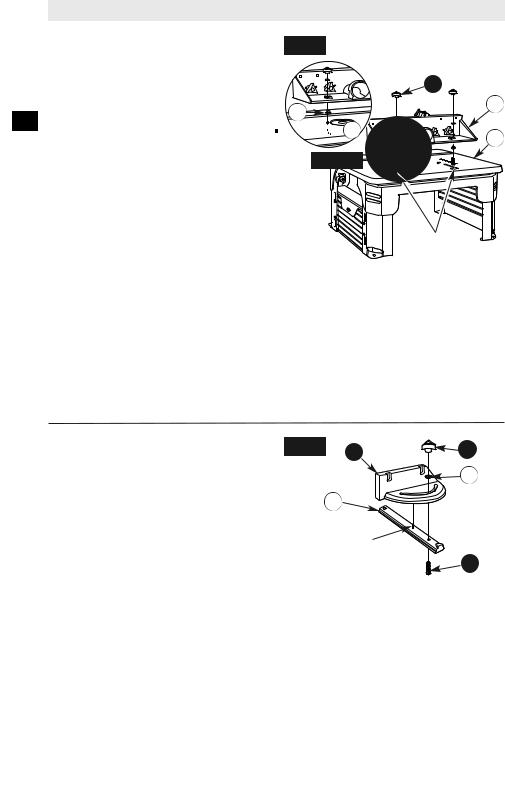
Router Table Setup
INSTALLING THE FENCE ASSEMBLY (Fig. 12 and Detail 12)
The fence comes assembled. Step 1 refers to reassembly, if necessary; otherwise, go to Step 2 if already assembled.
1.Install spacers (31) on square-head bolts (47) (Detail 12).
2.From underneath the fence, slide two 1/4-20 x 21⁄4" square-head bolts (47) with spacers (31) up through the holes in the bottom of the fence assembly (C). Loosely attach a large clamping knob (21) onto each bolt. (See
Fig. 12.)
3.Insert the square-head bolts (47) with spacers (31) through the holes of the J-slots on the tabletop (1), making sure the bolt heads and spacers are below the inside surface of the tabletop and can slide freely in the J-slot.
4.From the rear of the table assembly, slide the fence assembly (C) right and into the J-slot and make sure that it slides smoothly from front to back.
5.Tighten the large clamping knobs (21) to secure the fence assembly (C) to a desired position.
NOTE: Use the scale on the tabletop as a guide when aligning the fence for routing operations. Once the fence is positioned and aligned correctly, tighten the clamping knobs SECURELY.
MITER GAUGE ASSEMBLY (Fig. 13)
The miter gauge assembly comes fully assembled. If not, use the following instructions to assemble it.
1.Insert tab on top of the miter bar (23) in the hole in the bottom of the protractor head
2.Insert the #10-24 x 1" carriage bolt (37) through the square hole in the miter bar
(23)and slot in the miter gauge and secure with the flat washer (33) and the small clamping knob (25).
FIG. 12
21
31







 47
47
DETAIL 12
J-SLOTS
Router removed for clarity
FIG. 13 |
24 |
25 |
|
||
|
|
33 |
|
23 |
|
|
TAB |
|
|
|
37 |
C
A
16

Router Table Setup
TOOL BOXES (Fig. 14)
Your router table (A) comes with two tool boxes
(9) with hinged covers. The tool boxes are permanently mounted to the left and right leg assemblies (8 and 10). Both tool boxes have hinged covers with latching tabs on the front. Please note the tool boxes are an integral part of the leg assemblies and should not be removed.
FIG. 14 |
A |
8 
9 |
8 |
MOUNTING THE ROUTER TABLE TO A WORK SURFACE OR WORKBENCH
Before operating the router in the router table,
ensure that the table legs are fully extended and in the locked position. The entire unit (router table with router) is placed on and secured to a solid, flat, level surface that will
not tip. Such precautionary measures reduce the risk of table shifting unexpectedly while in
use resulting in property damage or serious personal injury.
HELPFUL TOOLS AND PARTS (not included)
•C-clamps
•Phillips screwdrivers
•Small adjustable wrench
•Electric or hand drill with drill bits (depending on mounting method used)
•Fasteners
—4 #10-16 x 3/4" pan-head wood screws and 4 washers (for solid wood surfaces or workbenches)
OR
—4 3/16" pan-head machine screws,
8 washers, and 4 hex nuts
NOTE: Method 1 and Alternate Method 1 will provide the bestsupport for the router table.
METHOD 1 (Fig. 15)
1.Set the router table (A) on a workbench or other stable and sturdy surface with the FRONT (switch side) of the router table facing towards you.
2.While holding the router table in the desired position, mark the location of the four mounting holes (one in each leg [8 and 10]).
3.Remove the router table (A) from the workbench and set it aside.
4.Drill suitable pilot holes (for wood screws) or through-holes (for machine screws) at the marked locations.
5.Place the router table (A) on the workbench and align the mounting holes in the router table legs (8 and 10) with the holes drilled in the workbench.
6.Secure the router table (A) in place using the wood screws and washers (not provided). If using wood screws, applying a thin coat of soap or wax to the screw threads will make it easier to thread the screws into the pilot holes.
7.TIGHTEN all screws SECURELY.
FIG. 15
A
8 |
10 |
|
17
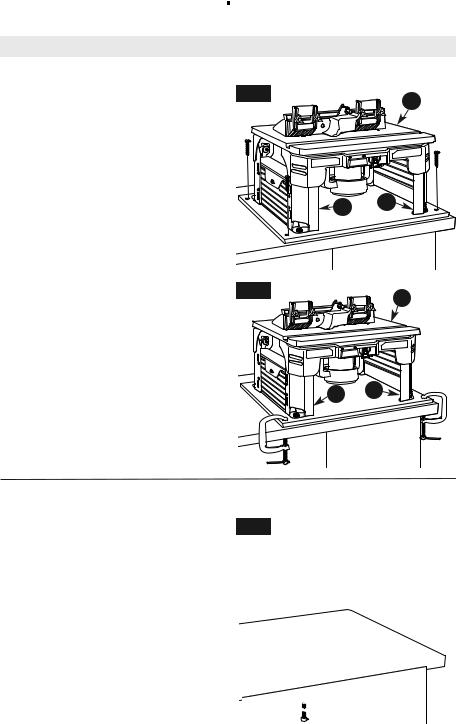
Router Table Setup
ALTERNATE METHOD 1 (Figs. 16 and 17)
1.Cut a board 18¼" wide x 23" long from a piece of 3/4"-thick wood or plywood.
2.Center the router table (A) on the board and mark the location of the four mounting holes (one in each leg [8 and 10]).
3.Remove the router table (A) from the workbench and set it aside.
4.Drill suitable pilot holes (for wood screws) or through-holes (for machine screws) at the marked locations.
5.Place the router table (A) on the board and align the mounting holes in the router table legs (8 and 10) with the holes drilled in the board.
6.Secure the router table (A) in place using the wood screws and washers (not provided). Applying a thin coat of soap or wax to the screw threads will make it easier to thread the screws into the pilot holes.
7.Secure the board to a workbench or other sturdy surface with screws (Fig. 17) or clamps (Fig. 18) during use.
IMPORTANT: Be sure the placement of the clamps will not interfere with operation of the router table.
METHOD 2 (Fig. 18)
FIG. 16
A
8 |
10 |
|
FIG. 17
A
8 |
10 |
|
FIG. 18
A
1. |
Set the router table (A) on a workbench |
|
|
|
or other stable surface with the FRONT |
|
|
|
(switch side) of the router table facing |
|
|
2. |
towards you. |
|
|
Using the clamping bosses on the router |
|
|
|
|
table legs (8 and 10), secure the router |
|
|
|
table legs to the workbench with clamps. |
8 |
10 |
|
Be sure to tighten them securely. |
IMPORTANT: Be sure the placement of the clamps will not interfere with the
operation of the router table.
18

Router Table Setup
OVERHEAD GUARD ASSEMBLY |
FIG. 19 |
|
Spacer |
|
(Fig. 19) |
|
|||
21 |
|
18 |
||
The overhead guard assembly (18) comes |
C |
|||
|
48 |
|||
preinstalled on the fence assembly. Some |
|
|
|
|
routing applications will require you to remove |
|
|
|
|
this guard. |
|
|
|
|
1. Loosen and remove clamping knob (21) on |
|
|
|
|
the top back of the fence assembly (C). |
|
|
|
|
2. Remove the 1/4-20 x 2½" carriage bolt (48), |
|
|
|
|
overhead guard (18), and spacer from |
|
|
|
|
the fence assembly (C). |
|
|
|
|
3. Reinstall the overhead guard assembly (18) |
|
|
|
|
by following these steps in reverse. |
|
|
|
Disconnect the router from the power supply
before installing router into the table, making adjustments, changing accessories, removing the router from the table, performing maintenance, or storing the tool. Such precautionary safety measures reduce the risk of unintentional tool operation.
INSERT RINGS (Fig. 20)
This router table includes three tabletop insert rings with the following hole sizes:
(11A) 1¼" diameter, for use with bits up to
11⁄8" diameter
(11B) 17⁄8" diameter, for use with bits larger than 11⁄8" and up to 1¾" diameter
(11C) 21⁄8" diameter, for use with bits larger than 1¾" and up to 2" diameter
No insert ring is required for bits with diameters between 2" and 2½".
Do not use the router table with bits over 2½"
in diameter. Bits larger than 2½" exceed the clearance hole in the tabletop insert rings. Bits larger than 2½" can contact insert plate or insert ring, throwing fragments.
These three insert rings are supplied individually and can be found in one of the storage boxes. The insert ring should fit into the tabletop hole completely. Use a fine file or emery board to remove excess plastic or rough edges that may cause the insert ring to protrude above the table surface.
Do not alter insert ring or insert plate bit hole.
Match the cutting diameter of the bit to the inner diameter of the insert ring or insert plate bit hole such that the difference is no
FIG. 20 |
11A |
1
 11B
11B
 11C
11C
2
less than 1/16" on a side. Insert rings are meant to reduce the gap between the cutting diameter of the bit and table so that workpieces maintain full support of the table while routing.
INSTALL TABLETOP INSERT RINGS (Fig. 20)
1.Select the insert ring (11A–11C) that best accommodates the router bit to be used.
2.Press the insert ring (11A–11C) into the large hole in the plastic insert plate (2).
3.Press down evenly over the tabs until the insert ring locks into place.
4.To remove, pull up gently until the tabs disengage. When not in use, store insert rings (11A–11C) in one of the tool boxes (9) or a convenient place.
Do not use, attempt to change, or remove
tabletop insert rings from the tabletop unless the router is off and unplugged.
Such precautionary safety measures reduce the risk of unintentional tool operation.
19

Router Table Operation
SWITCH CONTROL BOX
Do not plug router motor power cord into standard
wall outlet. It must be plugged into the router table switch. Power tool switches and controls need to be within your reach in emergency situations.
GENERAL INFORMATION
The power switch is designed for use with most BOSCH Router Tables. It provides the convenience of an ON (RESET)/OFF switch at the front of the table, thus eliminating the need to reach underneath the table to turn the router ON and OFF.
The power switch also provides an optional simultaneous ON/OFF control of an additional accessory, such as a light or a wet/dry vacuum. The switch has an internal, resettable circuit breaker to provide overload protection.
Improper connection of the equipmentgrounding conductor can result in risk of an electrical shock. The conductor with insulation that has a green outer surface, with or without yellow stripes, is the
 equipment-grounding conductor.
equipment-grounding conductor.
DO NOT CONNECT THE EQUIPMENTGROUNDING CONDUCTOR TO A LIVE TERMINAL.
Check with a licensed electrician if the grounding instructions are not completely understood or if there is doubt as to whether the electrical outlet or extension cord is properly grounded.
Do not permit fingers to touch terminals of the
plug when inserting or removing the plug from the outlet.
ELECTRICAL REQUIREMENTS
The switch box cord should only be plugged into a 14-gauge (or heavier), three-wire extension cord with a three-hole grounding receptacle and three-prong grounding plug. The extension cord must be plugged into a matching outlet that has been installed by a licensed electrician and grounded in accordance with all local codes and ordinances.
DAMAGED OR WORN EXTENSION CORDS ARE NOT TO BE USED AND ARE TO BE REPLACED IMMEDIATELY.
The electrical outlet at the back of the switch will accept three-hole extension cords.
The electrical receptacles at the back of the switch will accept either three-prong or two-prong plugs from a router or accessory.
In the event of a malfunction or breakdown, grounding provides the path of least resistance for electrical current in order to reduce the risk of electrical shock. This switch box is equipped with an electrical cord that has an equipmentgrounding connector and a grounding plug.
DO NOT modify the plug from the switch if it does not plug into the extension cord. Obtain an extension cord with the proper outlet.
Use the switch box only when properly assembled
to the router table. Use only with a router that has also been properly installed on a properly assembled router table. Such precautionary safety measures reduce the risk of injury due to loss of control.
Do not exceed a total combined rating of 15
amps when connecting the router and any accessories such as a light or wet/dry vacuum. The switch has a rating of 15 amps.
20
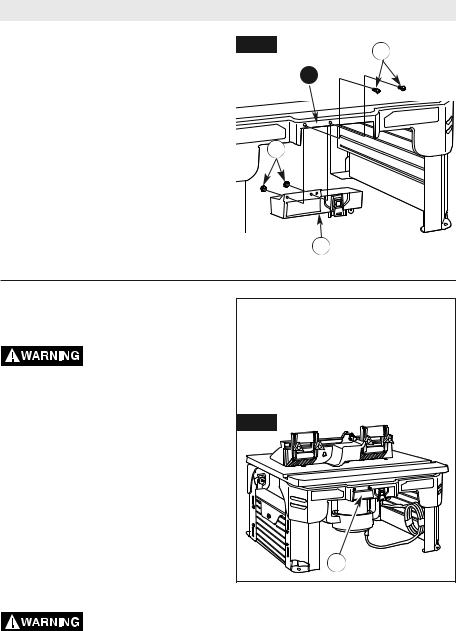
Router Table Operation
INSTALLING THE SWITCH BOX (Fig. 21)
If the switch box assembly (14) does not come preinstalled to the front table housing (6), use the following instructions to attach the switch box.
1.Place two #10-32 x 5/8" truss-head screws
(40)in the holes in the front table housing opening. NOTE: The screw heads should face the front of the table.
2.While holding the screws in place, slide on the switch box (14) and start the KEPS nuts
(32)on the screws. NOTE: The switch box should be behind the housing opening, and the washer side of the nuts should be against the switch box.
3.Hold the KEPS nuts (32) while tightening the two #10-32 x 5/8" screws (40) to secure the switch box (14).
FIG. 21 |
40 |
|
|
|
6 |
32
14
CONNECTING THE ROUTER POWER CORD TO THE SWITCH (Fig. 22)
Before connecting router to router table switch
box, ensure that the router switch is OFF, and that the router table switch box is unplugged. Such precautionary safety measures reduce the risk of unintentional tool operation.
1.Plug the router power cord into one of the electrical outlets on the back of the switch box (14).
2.Form the excess power cord into a coil.
3.Wrap two pieces of electrical tape or cable ties around the coiled cord at opposite sides of the coil.
4.Allow some slack so that the cord does not become stretched when it is plugged into the switch box outlets.
5.If desired at this time, plug the power cord from an accessory, such as a wet/dry vacuum or light, into the other outlet.
Before starting to work ensure that the power
cords from the router, accessories, the switch case, and the extension cord do not and cannot come in contact with the router or any moving parts of the router. Such precautionary safety measures reduce the risk of injury due to loss of control.
Cord Positioning
Position the switch cord and any accessory power cords down the inside of the legs, then out the rear base of the router table to an electrical outlet. Secure cord(s) to leg(s) with electrical tape or tie straps. This will prevent cord(s) from coming in contact with any moving parts.
FIG. 22
14 |
21

Router Table Operation
SWITCH OPERATION (Fig. 23)
This section explains the operation and features of the switch box assembly prior to plugging the power cord into a power outlet. The intent is to familiarize the user with the switch operation without actually turning ON the router.
The switch box (14) (Fig. 23) incorporates a lockout key (15) to help prevent unauthorized use by others.
•The lockout key (15) is the yellow part in the top of the red plastic paddle. The yellow lockout key must be completely inserted into the top of the red plastic paddle and switch box (14) before the paddle can be turned ON.
•The circuit reset button for the switch box (14) is on the bottom right side of the box.
Make sure that the extension cord is not
plugged into an electrical outlet before proceeding any further.
1.Make sure the yellow lockout key (15) is completely inserted in the top of the red plastic paddle.
FIG. 23
14 |
Circuit |
Switch box |
reset button |
assembly |
|
Red |
15 |
|
Yellow |
||
plastic paddle |
||
lockout key |
||
(ON/OFF switch) |
||
|
4.To prevent unauthorized use, the switch can be disabled by removing the yellow lockout key (15) completely from the top of the red plastic paddle.


 15
15
15
2. To turn the router ON, lift the red plastic paddle up to the ON position.
3.To turn the router OFF, press the red plastic paddle to the OFF position.
ON |
OFF |
(UP) |
(DOWN) |
22
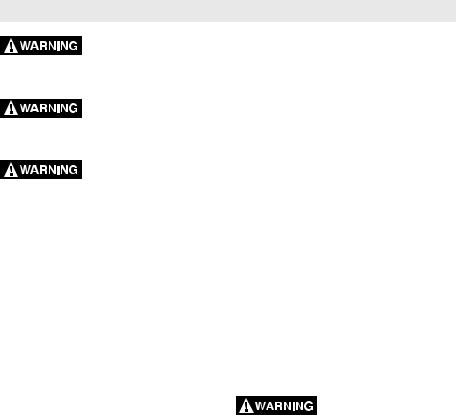
Router Table Operation
Before proceeding any further, make sure the
switch on the router is in the OFF position and the switch lever is in the OFF position.
Never leave the router unattended while it is running or before it comes to a complete
stop.
Before starting to work ensure that the power
cords from the router, accessories, the switch case, and the extension cord do not and cannot come in contact with the router or any moving parts ob the router. Such precautionary safety measures reduce the risk of injury due to loss of control
The switch power cord can now be plugged into the extension cord.
ROUTER AND SWITCH OPERATION
This section explains operation of the switch with the power cord plugged into the extension cord.
The router will turn ON when the red paddle on the switch box is pulled up to the ON position.
1.Position the ON/OFF switch on the router in the ON position. On certain routers this will require the use of the switch trigger and “LOCK-ON” button. (Consult router ownerʼs manual.) Make sure the switch on the switch box is in the OFF position when doing this.
2.To turn the router ON, pull up the red paddle to the ON position. See page 22.
3.To turn the router OFF, press the red paddle to the OFF position. See page 22.
CIRCUIT RESET BUTTON
NOTE: In the event of an overload, the internal switch circuit breaker will trip the switch box assembly OFF. This will interrupt power to the router and any accessory plugged into the switch itself. If this occurs, proceed as follows:
 1. Push the red plastic paddle to the OFF position and unplug the switch cord from the wall outlet or extension cord.
1. Push the red plastic paddle to the OFF position and unplug the switch cord from the wall outlet or extension cord.
2.Turn router switch to OFF position.
3.Remove the workpiece from the router table.
4.Correct the cause of the overload situation. For example, if too many accessories are plugged into the switch, or combined amperage exceeds the switch rating, remove the accessory. Other causes include the removal of too much stock
or use of too high a feed rate.
5.Press the circuit reset button on the bottom of the switch box.
6.Plug the switch power cord into the wall outlet or extension cord.
7.Restart the router as described in the section ROUTER AND SWITCH OPERATION on this page.
IIf the switch case does not work and you have tried to RESET the circuit reset button as
described above:
•Unplug ALL electrical connections.
•Remove the switch from the router table and obtain a replacement switch by calling BOSCH customer service at 1-877-BOSCH99.
WHEN THE ROUTER TABLE IS NOT IN USE
1.Make sure the switch is in the OFF position.
2.Remove the lockout key (15). See page 22.
3.Store the lockout key in a safe location where it is not available to children and other unauthorized persons.
4.Unplug the switch power cord from the wall outlet or extension cord.
5.Remove the router bit from the router.
6.Position the router collet assembly below the top of the router table.
NOTE: If the key should become lost or damaged, replacement keys are available by calling BOSCH customer service at 1-877-267-2499.
23

Router Table Operation
USING THE ROUTER TABLE
ATTACHING AND USING A WET/DRY VACUUM
Before connecting vacuum to router table switch box,
ensure that the vacuum switch is OFF, and that the router table switch box is unplugged.
Such precautionary safety measures reduce the risk of unintentional tool operation.
Do not exceed a total combined rating of 15
amps when connecting the router and any accessories such as a light or wet/dry vacuum. The switch has a rating of 15 amps.
The fence assembly has a port for connecting a wet/dry vacuum hose with a 2½" nozzle. To attach, simply push the nozzle into the port while holding the fence assembly in place. The vacuum can be plugged into the router table switch box. Be sure the cord does not interfere with router operation.
Operating the router table without a wet/dry vacuum can result in an excessive buildup of sawdust
and wood chips under the fence assembly and guard, reducing the performance of the router table and fence assembly.
RECOMMENDATION: To maximize performance, regardless of whether a wet/dry vacuum is being used, remove the sawdust and wood chips from under the fence assembly and guard as needed.
RECOMMENDATION: It is always a good practice to keep the work area clean. As necessary, remove any accumulated sawdust and wood chips from the top of the router table, as well as from the surrounding work area and floor.
Never place your fingers near a spinning bit or
under the guard when the router is plugged in. Such precautionary safety measures reduce the risk of personal injury.
INSTALLING THE ROUTER BIT (CUTTER)
Disconnect the router from the power supply before making adjustments or changing
accessories. Such precautionary safety measures reduce the risk of unintentional tool operation.
Install the router bit according to the instructions included with your router. Because of the large variation of router bits, certain router bits may not always operate in the desired manner with this router table.
To ensure that the most popular bits will perform satisfactorily, install the bit so that the router collet engages 3/4" of the router bit shank. If the shank of the router bit bottoms out in the collet, back out the router bit approximately 1/16" to allow for proper tightening.
NEVER INSTALL ROUTER BITS WITH LESS THAN 3/4" OF SHANK ENGAGEMENT IN THE COLLET.
24
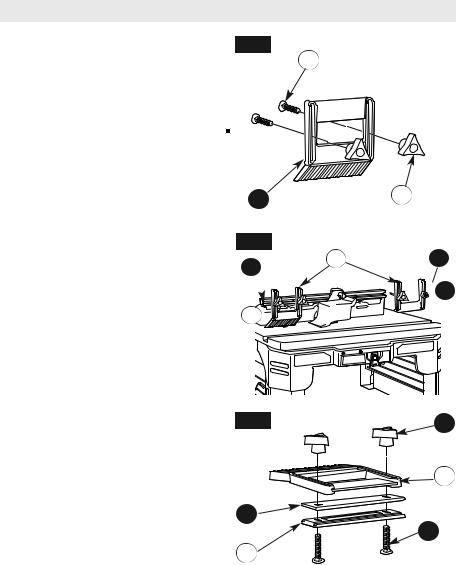
Router Table Operation
ASSEMBLING THE FEATHERBOARDS (Figs. 24–26)
NOTE: The top/front side of each featherboard is marked to indicate proper feed direction.
Fence Featherboard (Fig. 24 and 25)
1. Insert two 1/4-20 x 1½" carriage bolts (46) through the slotted holes in each featherboard (22). (See Fig. 24.)
2.Thread clamping knobs (21) three or four turns onto each carriage bolt (46).
3.To install on fence, slide the head of each carriage bolt (46) into the end of the T-slot in the featherboard mounting rail (17). (See Fig. 25.)
4.Secure the featherboard(s) (22) to fence assembly (C) by tightening the small clamping knobs (21). (See Fig. 25.)
FIG. 24
46
22 |
21 |
|
FIG. 25
17 |
22 |
21 |
|
|
Tabletop Featherboard (Fig. 26)
NOTE: The featherboard slide plate assembly is T-shaped for use in the miter channel and has round indentations on the bottom for the carriage bolt heads.
1.Insert two 1/4-20 x 1¾" carriage bolts (46) through the holes in both the lower and upper featherboard slide plates (50 and 49) and the slotted holes in the featherboard (22) as shown in Fig. 26.
2.Thread a small clamping knob (21) three or four turns onto each carriage bolt (46).
3.To install the featherboard (22) in the miter channel (3), insert the upper and lower featherboard slide plates (49 and 50)
into the miter channel. Then slide the featherboard to the desired location on the miter channel and tighten the clamping knobs (21).






 3 C
3 C 










FIG. 26 |
21 |
|
|
|
22 |
49 |
|
|
46 |
50 |
|
25
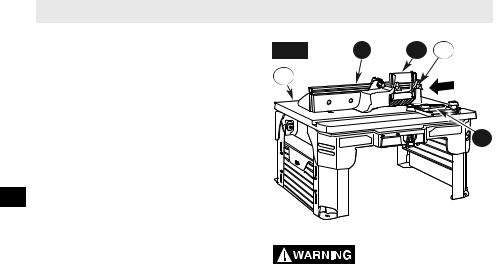
Router Table Operation
ROUTING USING FEATHERBOARDS (Fig. 27)
Featherboards are helpful in controlling the workpiece while routing and assisting in keeping the workpiece flat on the tabletop. The tabletop featherboard combined with the fence featherboard helps keep the workpiece pressed against the fence and tabletop. The best location for the featherboards varies according to your application, workpiece size, and other factors.
1.Loosen clamping knobs (21) on featherboard(s) (22) until featherboard(s) are adjustable.
2.Place the workpiece on the router table (1) so that it is squarely against the fence assembly (C).
3.Position the featherboard(s) (22) snugly against the workpiece and tighten the clamping knobs (21).
4.The workpiece should move with some resistance but without requiring a great effort.
5.For wider workpieces, the tabletop featherboard cannot be used. The second featherboard may also be positioned on the fence, if desired.
FIG. 27 C 22 21
1 |
DIRECTION |
|
OF FEED |
||
|
||
|
22 |
Never let go of the workpiece when routing
until the cut has been completed and the workpiece is completely clear of the bit.
Such precautionary safety measures reduce the risk of personal injury and/or property damage.
•Featherboards aid in holding the workpiece in position when routing on a router table.
•They are NOT intended to hold the workpiece in place alone when the workpiece is in contact with the bit, or at any other time when the bit is turning.
26
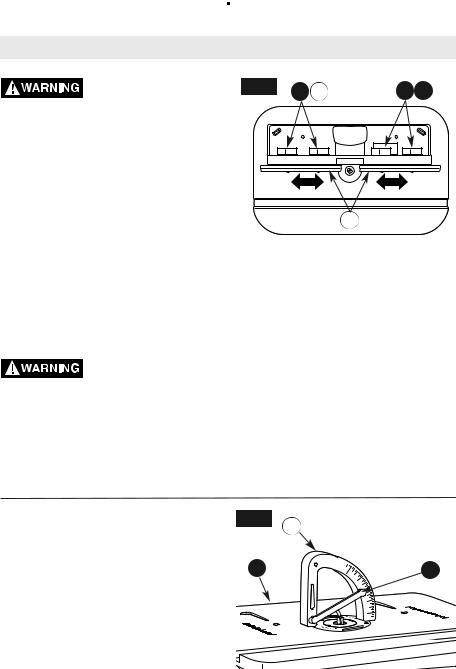
Router Table Operation
For accuracy in routing and improved control, the
workpiece should be held against the router table fence when routing.
ADJUSTING THE FENCE
FACEPLATES (Fig. 28)
The right and left fence faceplates are attached to the front face of the router table fence and can be adjusted inward or outward from the router bit to allow proper clearance for different-sized bits. To provide the best support during routing operations, the fence faceplates should be as close to the bit as possible without being able to come in contact with the bit (typically about 1/4" from the bit is a suitable distance).
1.Loosen the clamping knobs (21) and carriage bolts (45) securing each fence faceplate (19) and slide the faceplates inward or outward from the router bit as needed.
Always hold the workpiece against the
router table fence when routing. Such precautionary safety measures increase the accuracy in routing and improve the control of the workpiece reducing the risk of personal injury.
2.Once the fence faceplates (19) are in the desired position, tighten the clamping knobs (21) and carriage bolts (45) SECURELY.
USING THE BIT HEIGHT GAUGE (Fig. 29)
The bit height gauge allows you to measure the depth of the cut the bit will make in the workpiece. Use the following steps to adjust and set a predetermined cutting depth of the bit.
1.Position the bit height gauge (28) flat on the tabletop (1) over the router bit. The top of the bit should be in contact with the gauge pointer (29) on the bit height gauge.
2.Adjust the bit height to the desired cutting depth of the bit. The bit height will be shown on the outside edge of the bit height gauge.
3.Secure the bit at the desired cutting depth, remove the bit height gauge, and prepare the workpiece for cutting.
NOTE: Be sure fence and overhead guard are in place before routing.
FIG. 28 |
21 |
45 |
21 |
45 |
|
19
Guard not shown for clarity
FIG. 29 |
28 |
|
|
1 |
29 |
27
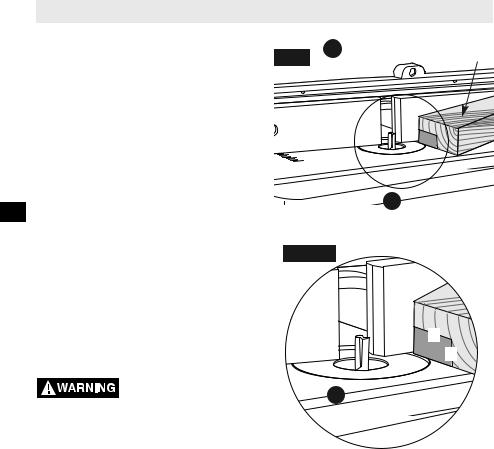
Router Table Operation
ADJUSTING DEPTH AND HEIGHT OF CUT (Fig. 30 and Detail 30)
1.Select a board that is smooth and straight, with good square edges.
2.Mark lines “A” and “B” on the end of the board, as shown in Detail 30.
•Line “A” indicates the desired height of cut.
•Line “B” indicates the desired final depth of cut.
•The area outlined by “A,” “B,” and the edge of the board is the area that will be cut away.
3.If the desired depth of cut can be cut in a single pass, loosen the fence clamping knobs (21) and move the fence forward or backward until the outermost cutting edge of the router bit is aligned with line “B.”
NOTE: For deeper cuts, DO NOT attempt to make the cut in a single pass. Make multiple shallower cuts, progressively moving the fence backward until the desired depth of cut is reached.
4.Use the scales on the tabletop (1) as a guide to align the fence; then SECURELY tighten both fence clamping knobs (21).
Always make sure that the fence and guard cannot
come in contact with the router bit. Failure to do so will result in damage to the router table and can cause personal injury.
5.Following the instructions that came with your router, adjust the router height of cut until the top of the router bit lines up with line “A.”
6.Once all adjustments have been made, double-check that:
•The router is SECURELY tightened in the router base.
•The router bit is SECURELY tightened in the router collet, with at least 3/4" shank engagement.
•The router base is SECURELY tightened to the bottom of the router table.
FIG. 30 |
21 |
Behind fence |
SCRAP WOOD |
|
on base |
|
|
|
AREA OF |
|
|
|
DETAIL 30 |
|
|
1
Guard not shown for clarity
DETAIL 30
A
B
1
7.Remove the board from the table.
NOTE: When making adjustments, use a piece of scrap wood to make trial cuts before making the cut with the actual workpiece.
8.Turn the router on and make desired cut in the workpiece.
28
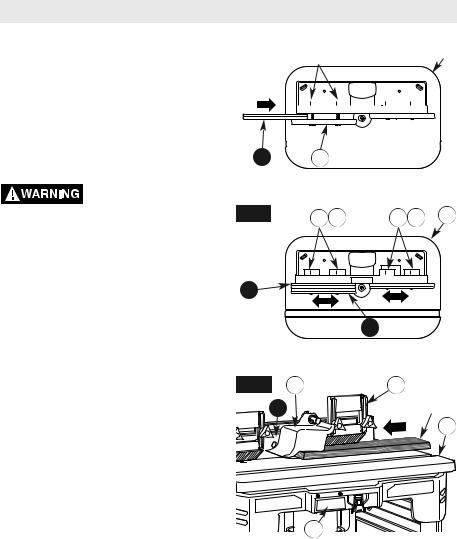
Router Table Operation
FULL EDGE CUTTING OR JOINTING (Figs. 31–33)
For maximum strength and accuracy, boards that are to be joined together should be smooth and true. The edges should be true to the workpiece surface. You can true the edges using the router table with a straight bit.
NOTE: Use the outfeed shim plate(s) to provide continuous support for the workpiece as it is fed past the router bit.
Always make sure that the fence and guard
cannot come in contact with the router bit.
Failure to do so will result in damage to the router table and can cause personal injury.
If you are using a wet/dry vac, it should be connected to the vacuum port on the back of the fence assembly.
1.Loosen the clamping knobs (21) on the back of the outfeed fence faceplate (19).
2.Align the slot in the outfeed shim plate(s) (20) with the holes in the outfeed fence faceplate (19), and slide the outfeed shim plate(s) (20) between the fence assembly (C) and the outfeed faceplate (19) (Fig. 31).
Use one outfeed shim plate for a 1/16" offset, or both shim plates for a 1/8" offset.
3.Install a straight bit in the router.
4.Position both fence faceplates so that they clear the bit by 1/4" (Fig. 32).
5.Tighten the clamping knobs (21) and carriage bolts (45) while holding both faceplates (19) in place.
6.Place a straight edge or a straight piece of wood on the table (1) so that it rests against the outfeed fence faceplate (19).
7.Move the fence back until the straight edge lines up with the cutting edge of the bit and is still in contact with the outfeed faceplate (19).
8.Tighten the clamping knobs (21) and the carriage bolts (45).
9.Remove the straight edge or board.
10.Adjust the height of the bit so that it will cut the complete thickness of the workpiece.
11.Position the featherboard(s) (22), if desired. See ROUTING USING FEATHERBOARDS on page 26.
12.Remove the board from the table (1) and make sure the overhead guard (18) is securely in place.
NOTE: When making adjustments, use a piece of scrap wood to make trial cuts before making the cut with the actual workpiece.
|
|
FIG. 31 |
|
|
|
|
|
|
|
|
|
|
|
|
|
|
|
|
|
|
|
|
|
|
C |
||
|
|
|
|
|
|
|
21 |
45 |
|
|
|
|
|
|
|
|
|
|
|
|
|
|
|
||||
|
|
|
|
|
|
|
|
|
|
|
|
|
|
|
|
|
|
|
|||||||||
|
|
|
|
|
|
|
|
|
|
|
|
|
|
|
|
|
|
|
|
|
|
|
|
|
|
|
|
|
|
|
|
|
|
|
|
|
|
|
|
|
|
|
|
|
|
|
|
|
|
|
|
|
|
|
|
|
|
|
|
|
|
|
|
|
|
|
|
|
|
|
|
|
|
|
|
|
|
|
|
|
|
|
|
|
|
|
|
|
|
|
|
|
|
|
|
|
|
|
|
|
|
|
|
|
|
|
|
|
|
|
|
|
|
|
|
|
|
|
|
|
|
|
|
|
|
|
|
|
|
|
|
|
|
|
|
|
|
|
|
|
|
|
|
|
|
|
|
|
|
|
|
|
|
|
|
|
|
|
|
|
|
|
|
|
|
|
|
|
|
|
|
|
|
|
|
|
|
|
|
|
|
|
|
|
|
|
|
|
|
|
|
|
|
|
|
|
|
|
|
|
|
|
|
|
|
|
|
|
|
|
|
|
|
|
|
|
|
|
|
|
|
|
|
|
|
|
|
|
|
|
|
|
|
|
|
|
|
|
|
|
|
|
|
|
|
|
|
|
|
|
|
|
|
|
|
|
|
|
|
|
|
|
|
|
|
|
|
|
|
|
|
|
|
|
|
|
|
|
|
|
|
|
|
|
|
|
|
|
|
|
|
|
|
|
|
|
|
|
|
|
|
|
|
|
|
|
|
|
|
|
|
|
|
|
|
|
|
|
|
|
|
|
|
|
|
|
|
|
|
|
|
|
|
|
|
|
|
|
|
|
|
|
|
|
|
|
|
|
|
|
|
|
|
|
|
|
|
|
|
|
|
|
|
20 19
Guard not shown for clarity
FIG. 32 |
21 |
45 |
21 |
45 |
C |
20 |
|
|
|
|
19 |
|
Guard not shown for clarity |
|
FIG. 33 |
18 |
22 |
19 |
|
WORKPIECE |
|
|
1 |
14
13.Make sure that both the router and switch box are OFF; then plug the router into the switch box (14).
14.While firmly holding a piece of scrap wood against the fence and down against the router table, feed a piece of scrap wood toward the bit in the direction shown by the arrow in Fig. 33.
15.Using the switch box (14), turn the router OFF. If any adjustments are needed, unplug the power cord and repeat steps 6–11 until all adjustments are correct. Once you are satisfied with all settings, make the cut with the actual workpiece.
29
